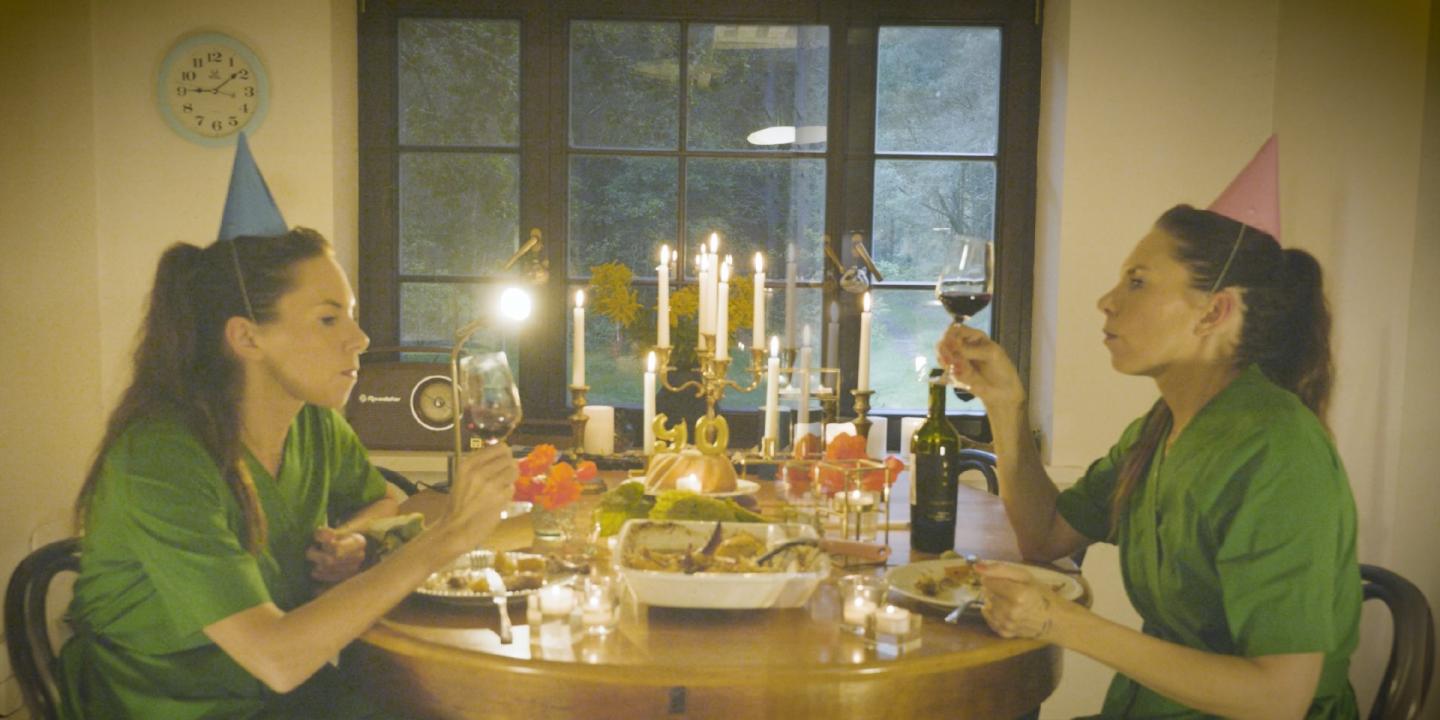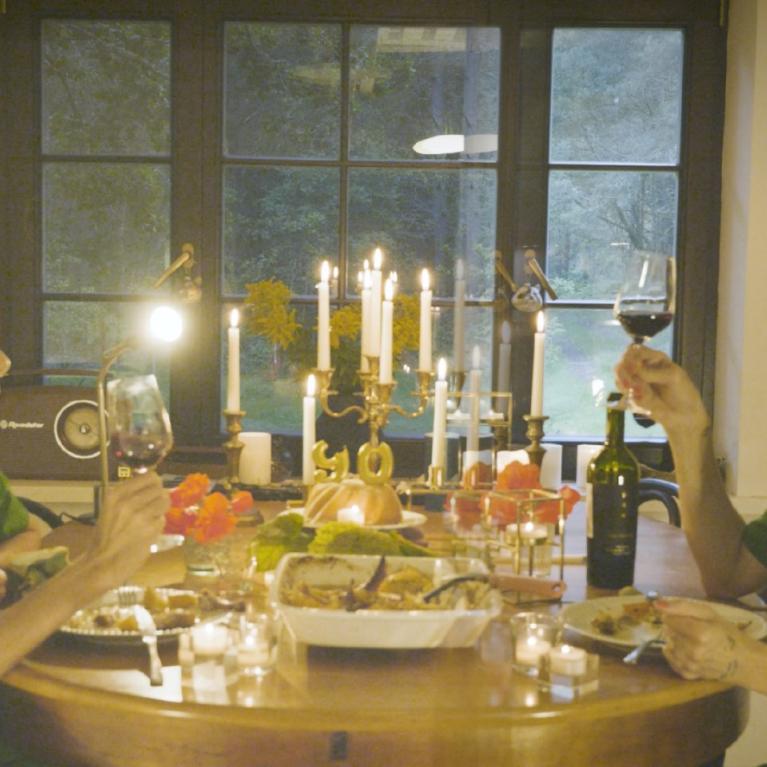Katrīna Neiburga. Sologamy
In December 1993, the relatives and closest friends of Linda Baker from America received a peculiar invitation to a wedding with a non-existent groom. In a ceremony that took place on her 40th birthday in the presence of 75 guests and seven bridesmaids, Linda got married to herself, stressing that this act was driven neither by regret nor feminism: "It’s about doing things for yourself and not waiting around for someone else to make it happen."[1] In nuptial history of the world, Linda Baker's wedding is mentioned as one of the first cases of sologamy in contemporary society. In 2003, this example was followed by Jennifer Hoes, while in 2022 wide controversy in the media was caused by Indian blogger Kshama Bindu's announcement of a traditional Hindu ceremony for her wedding with herself.
Sologamy. From an etymological perspective, this term can be explained very literally – marriage (ancient Greek γάμος (gámos)) with oneself (solus), which conceptually can be linked with self-acceptance, yet does not correspond to any religious or legal categories. Among sologamy's basic set of principles it is possible to perceive manifestations of a feminist perspective, buds of narcissism as well as rituals asserting one's own identity. At the same time, the value of sologamy is openness, respect and the ability to conduct an adequate dialogue with one's own essence and desires.
In her personal exhibition devoted to the investigation of sologamy and interpretations of this term, artist Katrīna Neiburga will reflect with her characteristic openness and unpacking of her personal world. In several video episodes the artist will focus on close-up observation of herself in different everyday situations – in an emotional conversation or passionate argument with herself; a dance with domestic objects to her favourite song; expressions of love and sexuality, accepting herself here and now. Through emotional saturation, yet at the same time keeping a slightly satirical perspective, the exhibition will offer a look at the understanding of the concept of sologamy. Are we searching for justifications for self-respect? And if we are, then – why? Katrīna Neiburga's intimate art will not be an answer to questions posed by others, but a resonant encouragement to gather the will to cross the awkward boundary and finally establish a lively relationship to our own selves.
Alongside videos, which will be projected in the white Cupola Hall of the LNMA as different kaleidoscopic fragments of a single story (at the same time retaining their autonomy), the exhibition will also include artefacts from the observation of this self-relationship – prostheses of sologamic life and the lucky stone dress – an embodiment of the artist's actual feelings. Visitors of the exhibition will also have access to a handbook of sologamy, which gathers the reflections of different cultural figures on this subject.
* Biederman Ward, Patricia. Here Comes the Bride, All Alone. Los Angeles Times, 1993. Available here.
About artist
Katrīna Neiburga is among the most important and productive artists in the Latvian contemporary art scene. She has made video works (including music videos) and films, created stage designs and projections for opera and theatre as well as working in the fields of installation, object art and performance. She has received several awards, including the prestigious Purvītis Prize in 2009, two Latvian Grand Music Awards for the works Cantando y Amando in 2013 and the opera Chill in 2022, annual theatre award Spēlmaņu Nakts as best video artist (2023) as well as for the opera Chill (2022) and Malleus Maleficarum (2023). She represented Latvia at the 56th Venice Biennale in 2015 (with the work Armpit together with the artist Andris Eglītis; curator Kaspars Vanags) and was nominated for the prestigious Ars Fennica award in Finland (2008). Neiburga has taken part in exhibitions since 2000 both in Latvia and internationally. Her works are held in the collections of the Latvian National Museum of Art and Finnish Museum of Contemporary Art KIASMA as well as in several private collections. She has made stage designs and video projections for many opera houses and theatres, among them the LNO, Bastille Opera in Paris, Sweden's outdoor opera house Dalhalla, Mariinsky Theatre in Saint Petersburg, Theatre Vanemuine in Tartu, The New Riga Theatre, Valmiera Theatre, Valmiera Theatre Festival and others.
About curator
Auguste Petre is an independent curator, co-founder and head of the gallery ASNI. She earned a master's degree at the Art Academy of Latvia in the specialty of Art History and Curatorial Studies. Petre's interests are mostly related to the new materiality in visual art as well as the expressions of Latvian artists born in the 1990s. Petre has curated more than 20 contemporary art exhibitions with the participation of international artists, she is also the author of several exhibition concepts and accompanying texts. Her most significant recent projects include Audio-visual Summer Gallery in collaboration with radio Tīrkultūra as well as MAREUNROL'S personal exhibition Fieldwork: Invisible exercises.
From 2019 to 2023, Petre was programme director at Riga's Smallest Gallery, including as co-author of the cycle of Riga's Smallest Auctions. She took part in the establishment of VV Foundation's PaIR international residency, and in 2023 curated the contemporary art collection of SEB Global Services. Since 2017, Auguste Petre has been active as an art journalist, regularly contributing to Latvian and international media, among others, working as Baltic editor at the portal Arterritory.com. Since 2022, she has regularly written for the magazine Teātra Vēstnesis, surveying visual aspects in the contemporary theatre scene. She is also the author of several scientific publications. Since 2021, Auguste has increasingly turned to academic activities, working as a visiting lecturer at the Art Academy of Latvia.
Text by Auguste Petre





